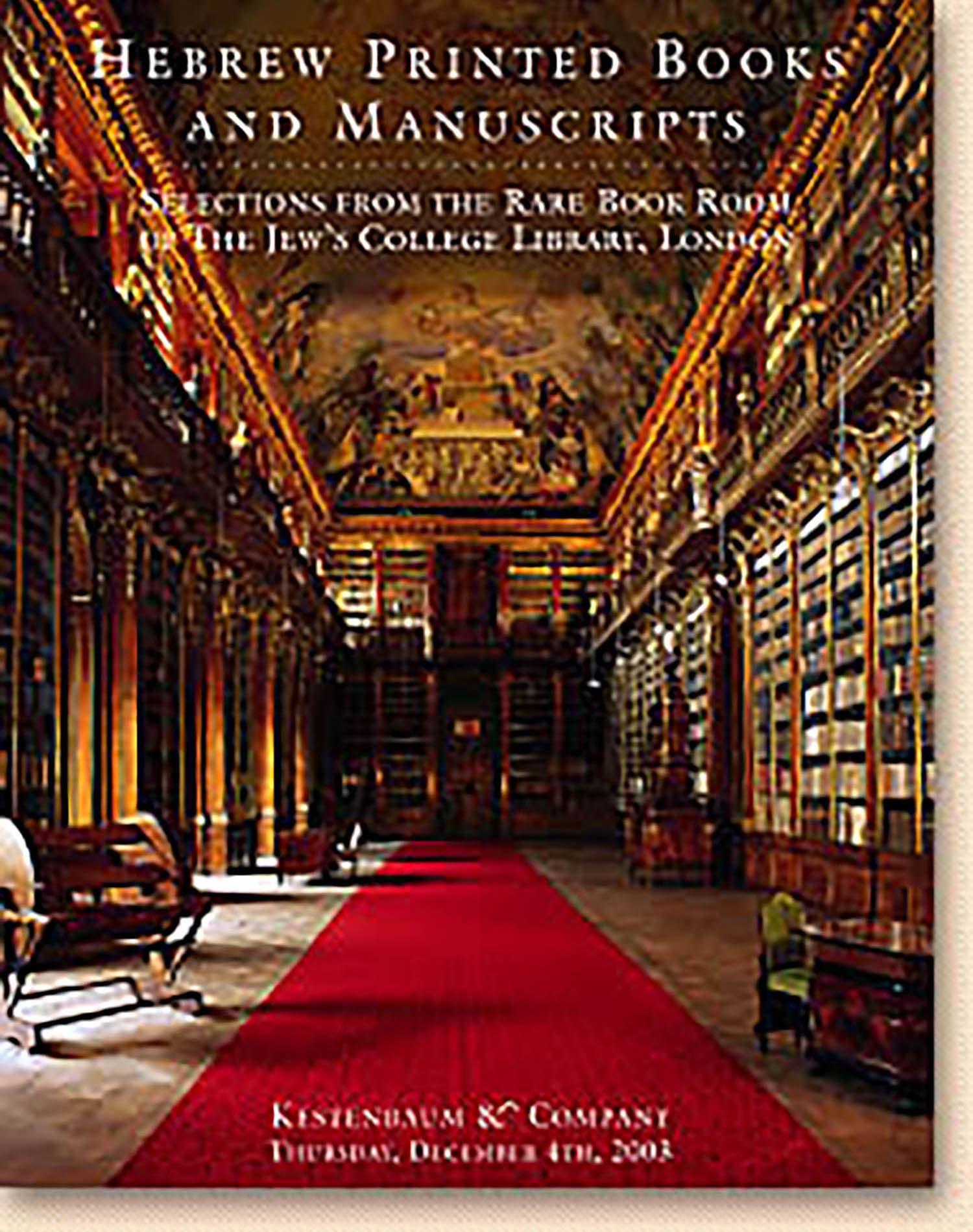Anonymous. Chemdath Yamim [Liturgy]

AUCTION 21 |
Thursday, December 04th,
2003 at 1:00
Kestenbaum & Company Holds Inaugural Auction of Hebrew Printed Books & Manuscripts at Their New Galleries
Lot 216
(SABBATIANA)
Anonymous. Chemdath Yamim [Liturgy]
Zolkiew: Aaron and Gershon, Sons of Hayim David Segal 1744
Est: $500 - $700
On the surface, Chemdath Yamim (Delight of Days) is an extremely esthetic distillation of Lurianic kabbalah applied to the cycle of the Jewish year. Israel Zinberg could not lavish enough praise on the literary style of Chemdath Yamim. The popularity of the work is attested to by the many editions it went through within a very short amount of time. Below the smooth surface, there is a disturbing undercurrent of crypto-Sabbatianism. Rabbi Jacob Emden discovered in the collection three songs for the festivals composed and signed by Nathan of Gaza, the notorious “prophet” of the pseudo-Messiah of Izmir, Shabbetai Zevi. But Emden went too far when he ascribed authorship of the entire work to Nathan. For years, authorship of Chemdath Yamim remained one of the whodunits of Jewish History, until in the 1980s, Prof. Isaiah Tishby was able to demonstrate conclusively that the approbator of the book, Rabbi Chayim Abulafia, was actually instrumental in inspiring the work, probably executed by one or more of his close disciples. Several pasages in Chemdath Yamim reflect takanoth, or halakhic enactments, Abulafia instituted during his stint in the rabbinate of Izmir.
The book was greatly revered in the Sephardic world. In the Ashkenazic world, due to the untiring efforts and influence of Rabbi Jacob Emden, it was destined to fall into disrepute in some quarters. Our own edition stems from Zolkiew in eastern Galicia. Yaari found that the Zolkiew edition differs from its Turkish predecessors in several respects: the omission of the word “Zevi”; of one of Nathan of Gaza’s poems; and finally, of the different version of one of the stanzas of Lekha Dodi. All these omissions constitute a clumsy attempt to deflect critics’ claim that the book is Sabbatian in character. Yaari attributed the printers’ caution to the fact that the city of Zolkiew itself was under scrutiny as a center of crypto-Sabbatianism. It was yet too early for Emden’s opposition to be a factor in these editorial changes. Though Emden expressed some mild criticism of Chemdath Yamim as early as 1737, he would not unleash his wrath until 1752. See A.Yaari, p. 88; M. Fogel, pp. 368-370.
See Israel Zinberg, A History of Jewish Literature, Vol. V (The Jewish Center of Culture in the Ottoman Empire), pp. 151-160; Abraham Yaari, Ta’alumath Sepher (Jerusalem, 1954); Isaiah Tishby, Kiryat Sefer 54:586, n. 7; Tarbiz 50(1981):463-514; Y. Barnai, The Jews in Eretz-Israel in the Eighteenth Century (Jerusalem, 1982), p. 78, n. 32; p. 82, n. 46; Bezalel Naor, Post-Sabbatian Sabbatianism (Spring Valley, 1999), pp. 58-68; Moshe Fogel, “The Sabbatian Character of Hemdat Yamim: A Re-examination,” in Rachel Elior ed., The Sabbatian Movement and Its Aftermath: Messianism, Sabbatianism and Frankism II [Heb. Ha-Halom ve-Shivro] (Jerusalem, 2001), pp. 365-422.
